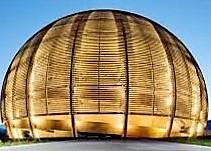Speaker
Description
Carbon burning is a fundamental process for the advanced stages of a massive star ($ M> 8M_\odot $) evolution. It mainly occurs through the $^{12}C+^{12}C$ fusion, however at temperatures higher than $ 10^9 K $ the $^{12}C+^{16}O $ fusion can become prevalent due to the increased abundance of $ ^ {16} O $ in the ashes of the helium burning. The $ ^{12}C + ^{16} O $ reaction also plays a role both in the explosive carbon burning and in the oxygen burning. Thus, the astrophysical energy region of interest ranges from 3 to 7.2 MeV in the center-of-mass frame.
In the literature there are various measurements of the cross section between 4 and 7.2 MeV in the center-of-mass, however, none of them goes below 4 MeV, making extrapolation necessary. Recently the reactions $ ^ {16} O (^ {12} C, \alpha) ^ {24} Mg $ and $ ^ {16} O (^ {12} C, p) ^ {27} Al $ have been studied in the entire energy region of astrophysical interest by applying the Trojan Horse Method to three-body processes $^{16}O(^{14}N,\alpha^{24}Mg)^{2}H$ and $ ^ {16 } O (^ {14} N, p ^ {27} Al) ^ {2} H $. In this talk, after a brief description of the method, the experimental setup as well as the preliminary phases of the data analysis will be presented and discussed.
